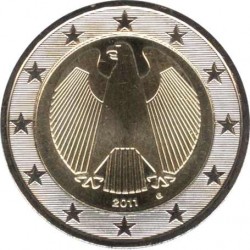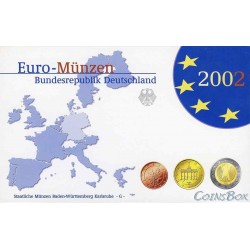No products
Product successfully added to your shopping cart
There are 0 items in your cart. There is 1 item in your cart.
Germany
- Sets of coins
-
Coins
- Coins Russia and CIS
-
Europe
- EURO
- Austria
- England
- Belgium
- Germany
- Italy
- Spain
- Latvia
- Lithuania
- Estonia
- Luxembourg
- Portugal
- France
- Finland
- Cyprus
- Andorra
- Greece
- Netherlands
- Slovakia
- Slovenia
- Ukraine
- Belarus
- Sweden
- Poland
- Norway
- Denmark
- Ireland
- Iceland
- Switzerland
- Monaco
- Liechtenstein
- Bulgaria
- Hungary
- Moldova
- Romania
- Czech
- Vatican
- Albania
- Bosnia and Herzegovina
- Macedonia
- Malta
- San Marino
- Serbia
- Croatia
- Montenegro
- Turkey
- Kazakhstan
- Transnistria
- Scotland
- Gibraltar
- North America
- South America
- Australia and South Pacific
- Africa
- Asia
- Tokens
- Silver
- Accessories
- Sochi 2014
- Banknotes
- Sale
- Marriages and species
- Sundry
Top sellers
-

-

-

Official set of series Russian Federation. Issue 11
Official set of series "Russian Federation". Issue 11
4 650 руб -

100 RUB Sochi 2014
680 руб -

-

-

10 kopeck 2015 MMD
7 руб -

-

1 Dollar First Patent 2018
250 руб -

Official set of series Russian Federation. Issue 12
Official set of series "Russian Federation". Issue 11
5 350 руб
No supplier
Viewed products
Germany 2 Euro 2020 Brandenburg
Data sheet
| Depth | 2,2 |
| Weight | 8,5 |
| Diameter (mm) | 25,75 |
| Mintage | 30000 |
| Material | bimetal |
| Country | Germany |
| Release date | 2020 |
| Quality | UNC |
More info
Germany 2 Euro 2020 Federal states of Germany - Brandenburg UNC from roll.
Brandenburg - Sanssouci Palace, Potsdam. 16th coin of the series.
Reverse: The map of Europe is located on the right side. The background of the map shows six vertical lines. There are 12 stars at the ends of these lines. To the left of the card is a numerical denomination. On the map itself is a horizontal inscription “EURO”.
Obverse: In the center is the Bundesrat building, on top is the year of issue “2020”, on the left is a sign of one of the German mints (A, D, F, G or J). Below “BERLIN” and “D” denoting the issuing state (Germany). On the outer ring are 12 stars of the European Union.
Release Date: January 28, 2020
Sanssouci Palace in Potsdam is one of the most popular attractions located in the eastern part of Germany.
Traveling in 1743, the Prussian king Frederick II the Great was amazed at the natural beauty of Potsdam. Even then, he thought about building a summer residence on one of the hills. A year later, terraces with vineyards were laid out here, and a little later they began the construction of the palace. The king himself, in the company of architects, began to design the future palace. He completed some drawings with his own hand, in others he took an active part. Frederick II did not leave aside the construction process, although the main leadership was entrusted to the architect George W. von Knobelsdorf.
The foundation was laid in January 1745, and in May 1747 the king announced the opening of the palace. Although part of the premises still needed refinement, the king and his entourage moved into new apartments. No official receptions were held here; the palace served exclusively as a place of relaxation and solitude. It is known that Frederick II gave the Schönhausen palace to his wife, and Sanssouci was the place of his personal rest. Here he philosophized, played music and rested from public affairs.
The king died in 1786, but his nephew violated his dying will and buried the remains in the church, where other members of the royal dynasty rested. Only in 1991, after several reburials, the remains of Frederick II were finally buried in the grave, which he had prepared for himself during his lifetime.
Frederick the Great, during the construction of the Sanssouci Palace, stood it in the Rococo and Baroque styles. It is noteworthy that in the palace and park complex the castle does not play a major role, but only supplements the grape terraces. The one-story building after the extension of the outbuilding acquired the dimensions of the main terrace. On the sides of the palace are mesh pavilions with elaborate gold trim. In them it was possible to retire after a walk along the long alleys.
On the facade, which is directed towards the vineyards, magnificent decoration stands out. Between the windows are pairs of sculptures that resemble Atlanteans. A small dome stands out in the center, on the arch of which the name of the palace is displayed. Most of the statues are made of warm sandstone and marble.
Отправить отзыв
История
Сохранено
Сообщества

















